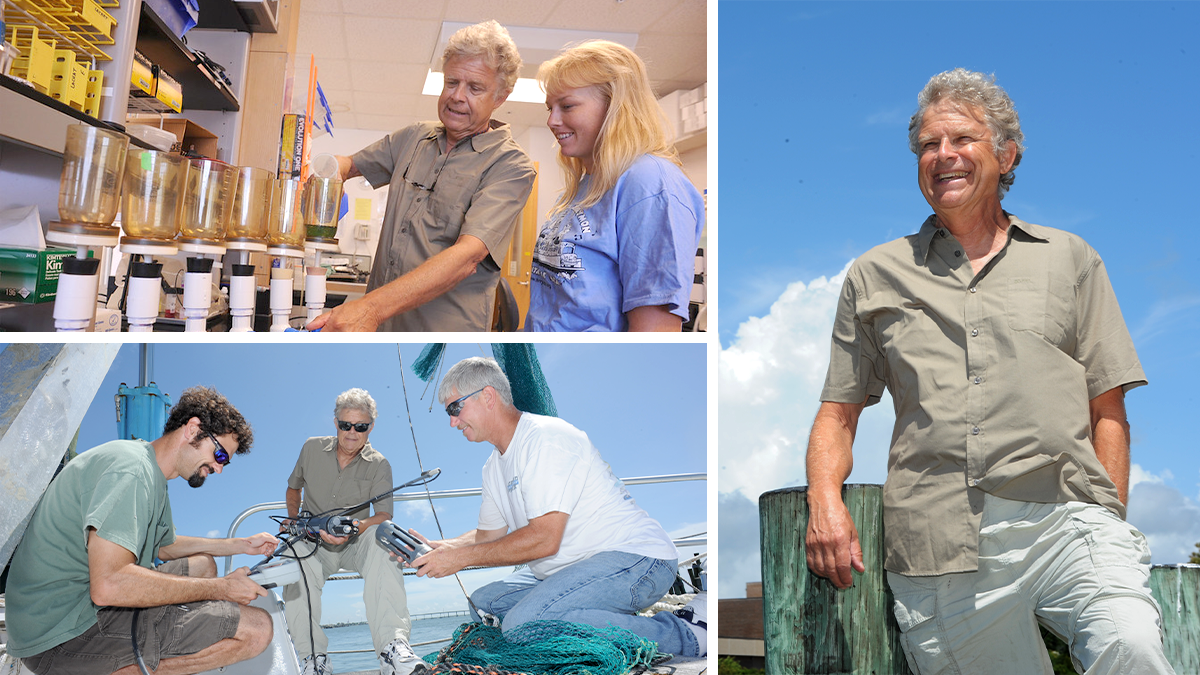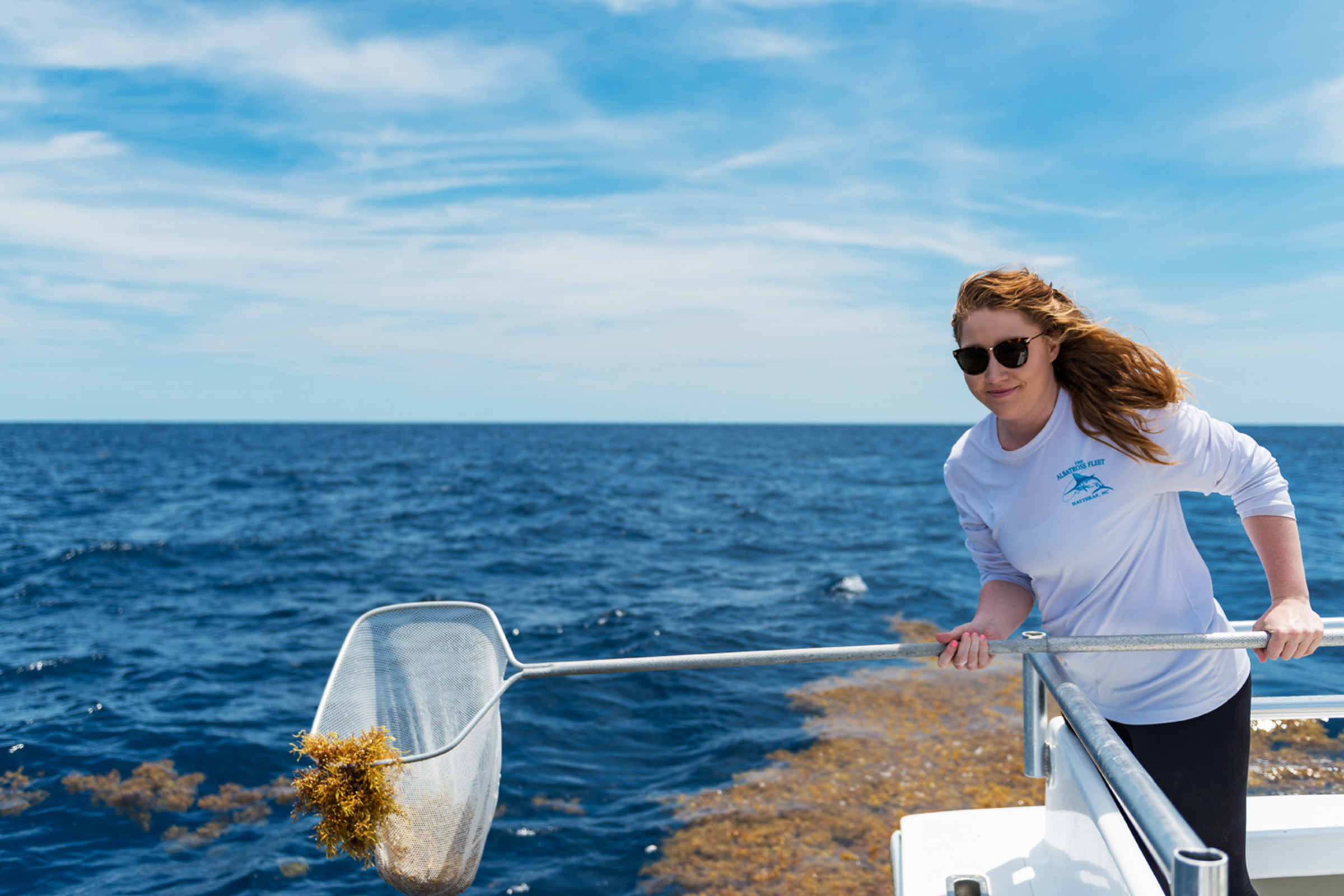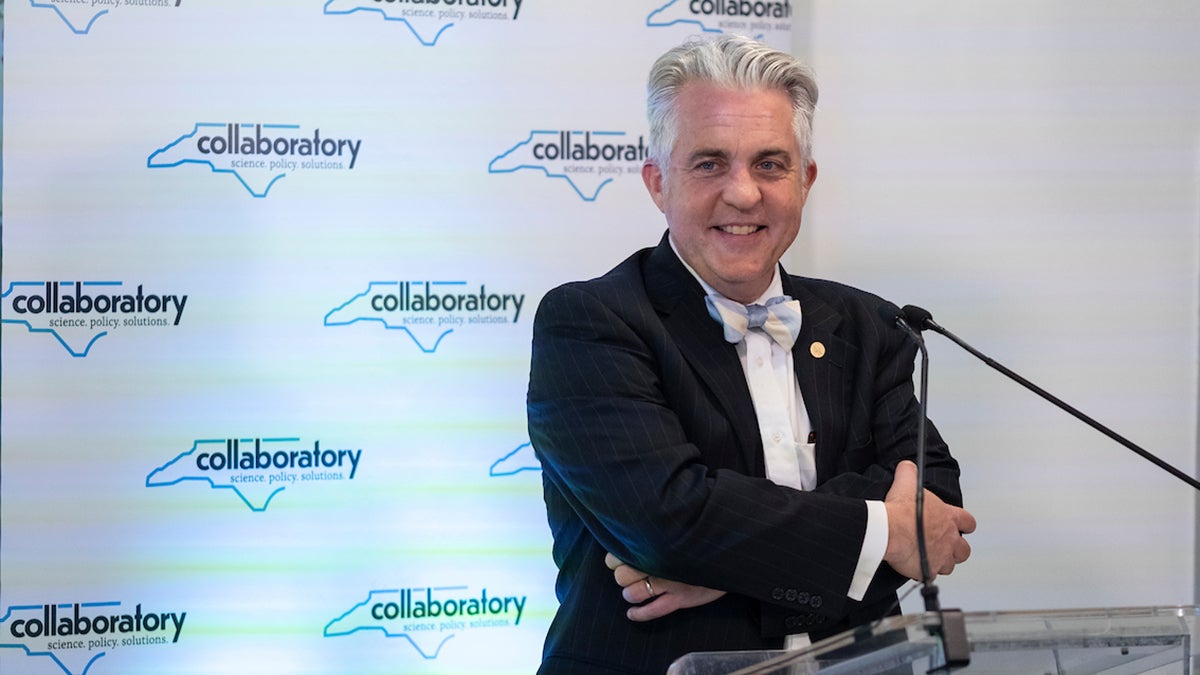FerryMon system monitors water quality
Scientist Hans Paerl uses ferries to gather data about harmful algal blooms in North Carolina sounds and estuaries.

In addition to the obvious effects of high winds, torrential rains and flooding, hurricanes can also bring large amounts of nutrient-laden runoff to downstream waters. These storm-driven nutrient loads can promote the proliferation of harmful algal blooms.
When Hurricane Floyd slammed into the coast of North Carolina in 1999, it resulted in major changes in water quality for the Pamlico Sound. The storm also prompted Hans Paerl to dig into the hurricane’s impact on water quality in the sound. “It’s interesting how catastrophes often lead to opportunities,” he said.
In this case, the opportunity was FerryMon — a ferry-based water quality monitoring project developed by Paerl and his colleagues at the UNC Institute of Marine Sciences in Morehead City and Duke University’s Marine Lab.
Inspired by Finnish research in the Baltic Sea, where large ferries autonomously collect water samples and record data on its quality during their transits, Paerl implement a similar program using two ferries, one in the Pamlico Sound and another in the Neuse River Estuary. Paerl’s research, now in its 25th year, analyzes numerous factors and transmits the data to the lab via the internet while the ferries travel down the waterway.
Since these ferries operate almost daily to transport people and supplies, Paerl’s research project was cost-efficient in its inception. These ferries serve as ships of opportunity, providing a chance to understand the impacts of storms on water quality. The innovative use of these ferries enables the researchers to capture water quality measurements in real-time, linking fluctuations to meteorological events.
FerryMon collects and analyzes these water samples to determine the type of algal blooms and their impacts on water quality. Algal blooms do not grow uniformly and can even proliferate while invisible to the naked eye.
“They are what I call raisin cookies: You get some dense areas of bloom and some not dense areas,” Paerl said. These dense areas greatly affect the water quality as potentially toxic algal blooms accumulate and dissolved oxygen levels decrease.
Importance in a changing climate
Paerl and his team are a part of the Albemarle-Pamlico National Estuary Partnership, which protects and restores essential resources in the estuary system. APNEP was established after the Clean Water Act was enacted and comprises different committees and partners working collectively to improve the natural world. The FerryMon project falls under APNEP’s monitoring and assessment committee, which provides data and analysis to other national estuary partnerships for implementing new strategies to protect estuarine resources.
Record-breaking storms are an increasingly common occurrence, and it is important to observe the impact of such storms on the marine environment and water quality parameters. Paerl and his research team are working on making portable sensing systems that can, conveniently, be loaded onto any ferry, allowing for more geographic flexibility in research opportunities. “It’s a program for all times and all seasons,” Paerl said.
In 2021, the FerryMon project began receiving funding from the NC Collaboratory, ensuring the continuation of the long-term water quality monitoring in the estuaries. FerryMon is a joint project with ModMon (modeling and monitoring), and together the projects have received approximately $660,000 in funding from the Collaboratory to continue the research.
The future of FerryMon is expanding, promising to provide new data about the future of water quality. With the help of the NC Collaboratory in addition to the guidance of APNEP, FerryMon will continue to be integral in the search for the right solution to best combat human and climatically driven change in local waters.


